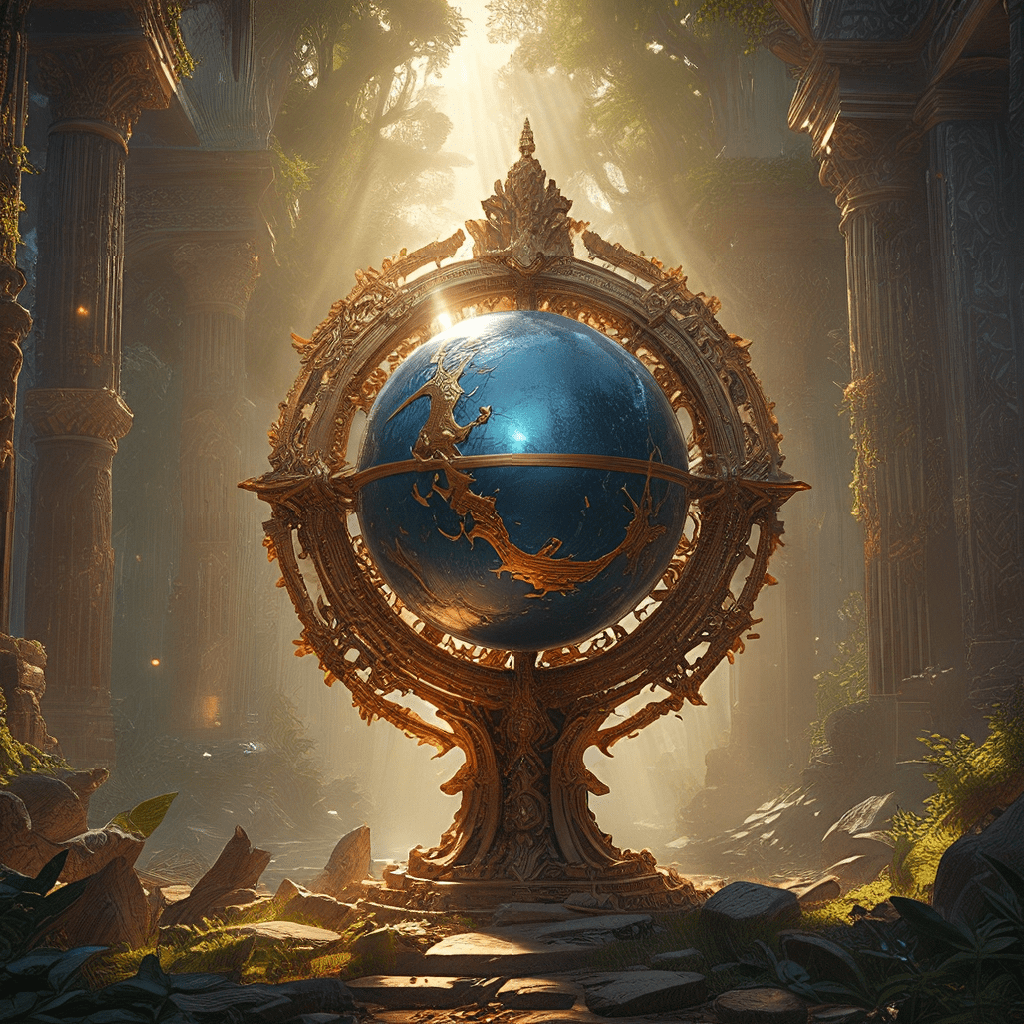The Egyptian Creation Myth: A Source of Inspiration for Writers
1. The Egyptian Creation Myth: An Overview
The Egyptian creation myth is a captivating tale that offers a glimpse into the ancient Egyptians’ understanding of the world’s origin. This myth, passed down through generations, played a significant role in their daily lives, providing a framework for their beliefs, rituals, and artistic expressions. The story revolves around the emergence of order from chaos, with deities playing central roles in shaping the universe. At the heart of this myth lies the concept of the “ben-ben,” a primordial mound that emerged from the primeval waters, representing the beginning of creation.
The “ben-ben” served as the foundation upon which the world was built, symbolizing the emergence of solid ground from the watery abyss. This mound was often depicted as a pyramid, reflecting the Egyptians’ reverence for these monumental structures as symbols of eternal life and power. The creation myth is not just a story about the origin of the cosmos but also an exploration of the divine forces that govern life, death, and the cyclical nature of existence.
2. Key Themes and Motifs
The Egyptian creation myth is rich with themes and motifs that resonate with human experiences across cultures and time periods. One of the most prominent themes is the triumph of order over chaos. The myth narrates how the world, initially a formless void, was brought into existence through the deliberate actions of deities who imposed structure and harmony on the universe. This theme speaks to the human desire for stability and control in a world often perceived as unpredictable and chaotic.
Another key motif is the power of the divine word. In many versions of the creation myth, deities are portrayed as bringing the world into being simply by speaking it into existence. This concept underscores the significance of language as a creative force, capable of shaping reality. The myth also emphasizes the cyclical nature of life and death, drawing parallels between the daily sunrise and sunset and the larger cycles of creation, destruction, and rebirth.
The sun god Ra, a central figure in the creation myth, embodies these cycles of life and death. He is associated with light, warmth, and the life-giving power of the sun. His daily journey across the sky symbolizes the continuous cycle of creation and renewal. The myth portrays Ra as a powerful deity who brought order to the universe, illuminating the world with his light and ensuring the continuity of life.
3. The Myth’s Influence on Literature
The Egyptian creation myth has captivated writers and artists throughout history, inspiring countless works of literature, film, and art. Its powerful imagery, complex characters, and profound themes continue to resonate with modern audiences. The myth’s influence can be seen in various genres, from epic poems to fantasy novels to contemporary science fiction.
Many writers have drawn inspiration from the myth’s core elements, such as the emergence of order from chaos, the power of the divine word, and the cyclical nature of existence. These themes provide fertile ground for exploring universal human experiences like creation, destruction, rebirth, and the search for meaning in a complex world.
4. The Myth of Atum: A Self-Created God
One of the most popular versions of the creation myth centers around the god Atum. This myth tells the story of Atum emerging from the primeval waters, known as Nun, as the sole deity in existence. Atum, often depicted as a self-created being, is referred to as the “self-begotten” – a powerful concept that highlights the idea of divine autonomy and self-sufficiency.
According to the myth, Atum, through a process of self-creation, brought forth the world. He is said to have created the world through a process of “masturbation,” symbolizing the act of procreation and the creation of life from a single source. This act of self-creation highlights Atum’s power and autonomy as the sole originator of existence, emphasizing the idea of a single divine source responsible for the creation of everything.
5. The Role of the Ennead
The Ennead, a group of nine deities, played a crucial role in the Egyptian creation myth. This powerful pantheon, representing the fundamental forces of nature, contributed to the shaping of the world. The Ennead is often depicted as a hierarchical structure, with Atum as the supreme deity, followed by his children – Shu (air) and Tefnut (moisture) – who emerged from Atum’s own being.
From Shu and Tefnut, the rest of the Ennead emerged, each deity representing a different aspect of the world. Geb (earth) and Nut (sky) were born from Shu and Tefnut, further establishing the relationship between these fundamental elements. The Ennead’s role in the creation story underscores the idea of a divine family responsible for creating order and harmony in the universe.
6. Symbolism of the Nile River
The Nile River, a lifeblood of ancient Egypt, holds immense significance in the Egyptian creation myth. The river’s annual flooding, a vital source of sustenance and fertility for the land, is seen as a reflection of the cyclical nature of creation and renewal. The myth often portrays the Nile as a symbol of life, growth, and the power of nature.
Just as the Nile floods the land, bringing life and prosperity, so too does the creative power of the deities bring forth the universe. The annual cycle of the Nile, with its periods of inundation and recession, is seen as a microcosm of the larger cycles of creation, destruction, and rebirth that are central to the Egyptian creation myth.



